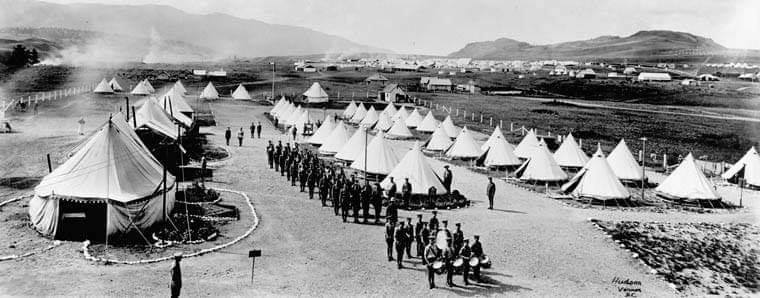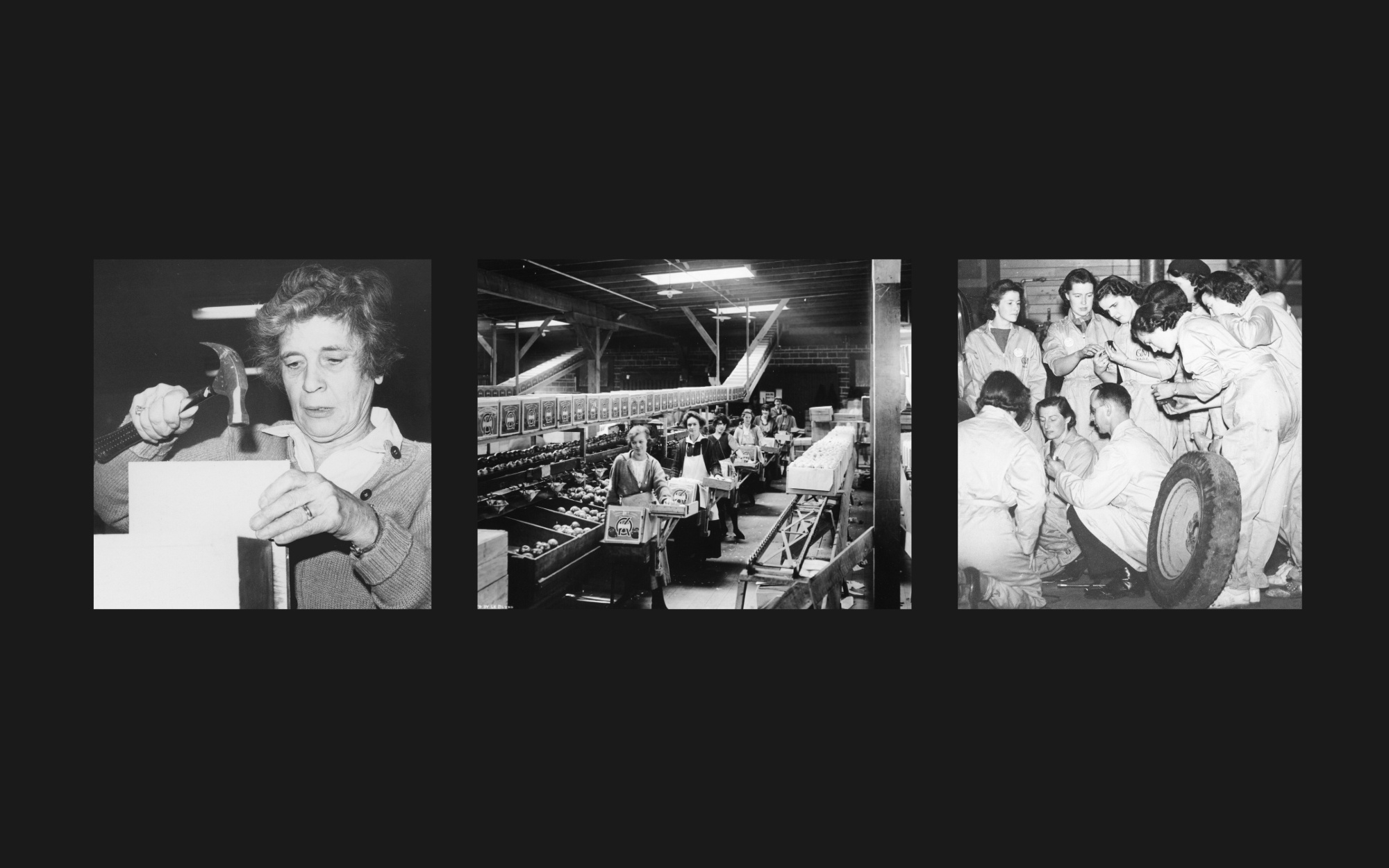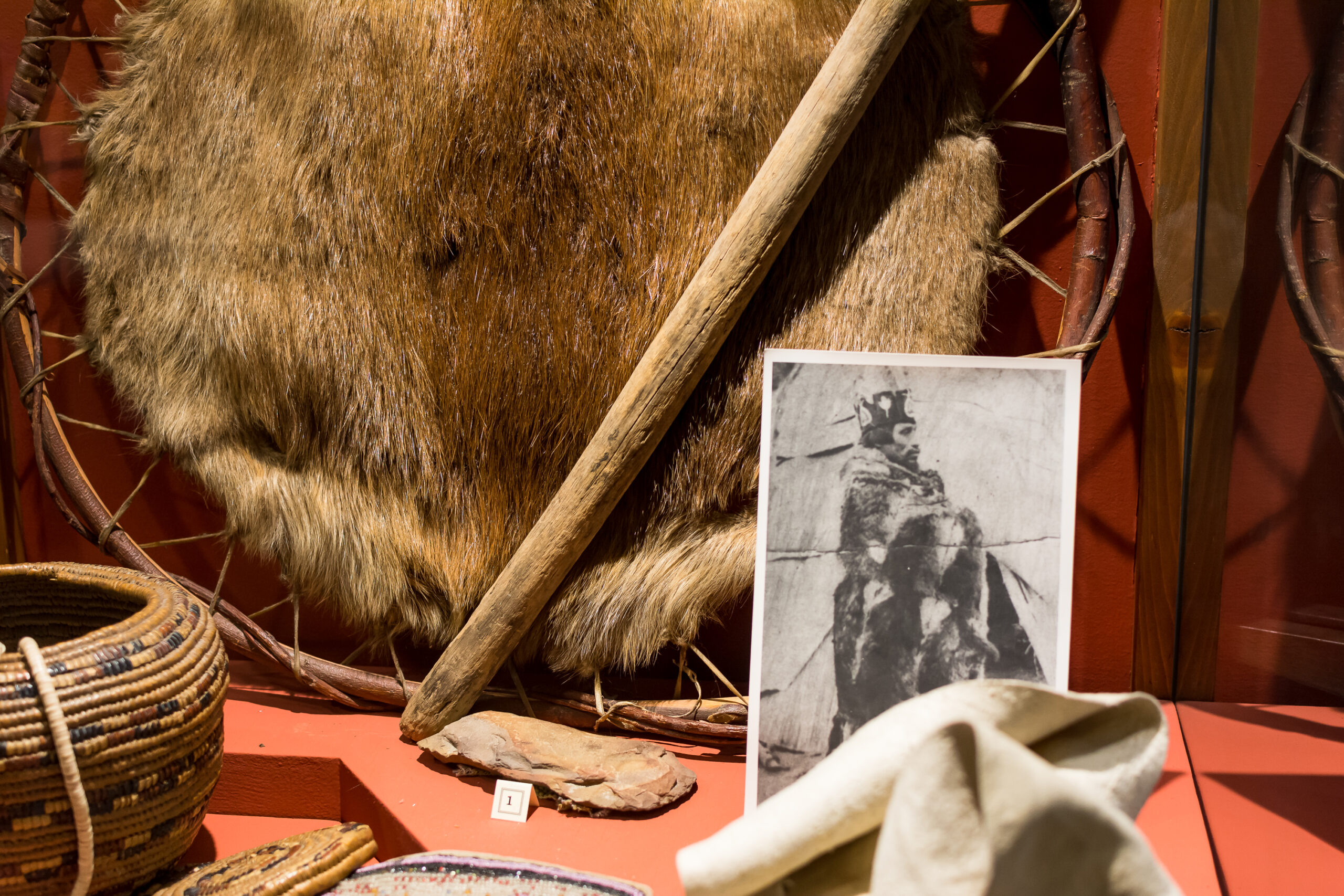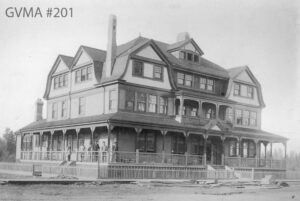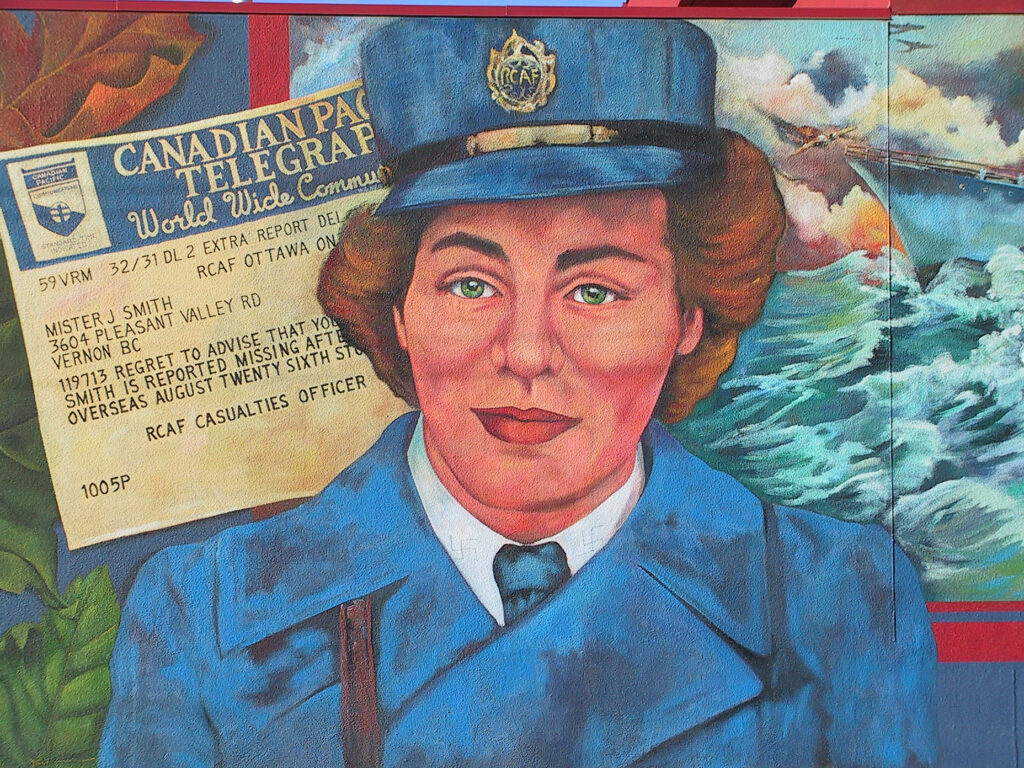
We will remember them
Vernon has a long and proud military history, with more than a century of dedication and involvement with the Canadian armed forces.
Get to know a little bit more about some of the local men and women who served our country in times of war and peace.
At the going down of the sun and in the morning
We will remember them.― Laurence Binyon, “For the Fallen”
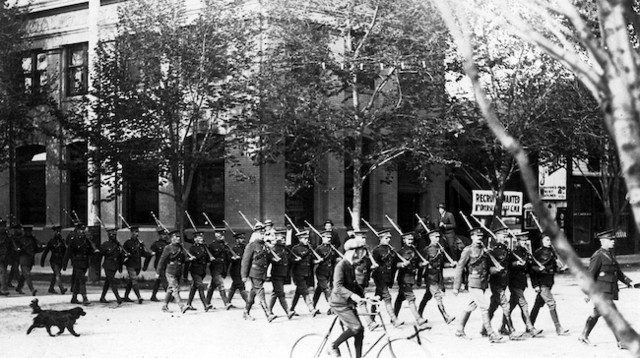
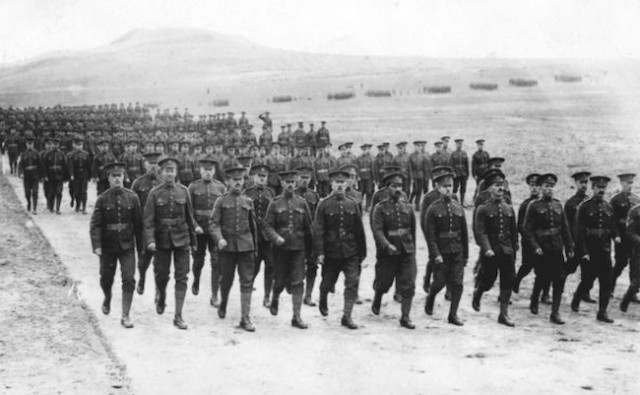
World War I
28 JULY 1914 TO 11 NOVEMBER 1918
World War I was a war that began in Europe and lasted from July 1914 to November 1918. Known as the Great War and “the war to end all wars”, it eventually led to the mobilisation of more than 70 million military personnel around the world, including 60 million Europeans, making it one of the largest and most deadliest wars in history.
Between 1914 and 1918, approximately 710 men from Vernon enlisted for war, accounting for more than 20% of the population.
Okanagan First Nations men from the Head of the Lake signed up in record numbers: every single eligible Indigenous Okanagan man aged 20-35 enlisted during the war.
Especially for Vernon’s younger generations, the outbreak of the First World War was an oddly invigorating time, with its early days marked by concerts, balls and ice cream socials.
A large number of automobile owners donated their vehicles to the Vernon Taxi Service for trips to and from the military training camp on the top of Mission Hill.
With so many soldiers in town, local businesses were able to stock boots, socks, uniforms and rations, providing a boost to the local economy.
But when the first local contingent of soldiers was sent overseas in 1915, the brutalities of war became all too real. In June 1915, the first news reached Vernon hat local soldiers had been killed in France and the list of casualties only continued to grow.
By the end of 1917, little remained of the festive spirit of the war’s early days. While men and women on the home front continued to fundraise for troops overseas, an atmosphere of sadness and despair had begun to settle over the town.

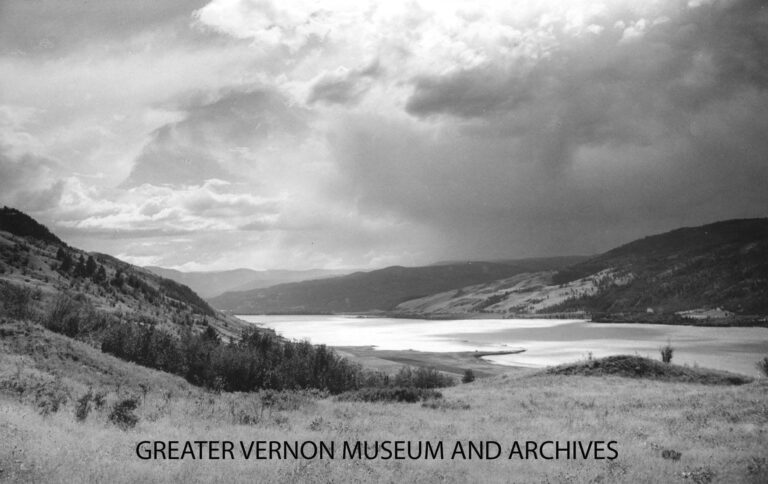

Private George McLean
In a damp, dark trench crawling with rats, George McLean sat silently alongside his fellow members of the Fifty-Fourth (Kootenay) Battalion. The year was 1917, and in a few hours the silence that had descended over no-man’s land would be broken by the sounds of screams, explosions, and machine gun fire. It was the first morning of the Battle for Vimy Ridge, which many historians consider a defining moment, and one of the greatest victories, for the Canadian Army.
George McLean, from the Nk’maplqs (Head of the Lake) Band, was not new to the world of soldering by the time of the Battle for Vimy Ridge. During the Boer War, when he was 25-years-old, McLean had served with the Canadian Mounted Rifles. When World War One broke out, McLean, alongside every other male member of the Head of the Lake Band between the ages of 20 and 35, enlisted with the Canadian Expeditionary Force. Almost immediately, he was sent overseas to France.
It was the start of the third day of the Battle for Vimy Ridge, but for the soldiers who were participating, it undoubtedly felt much longer. One member of the 2nd Divisions’ 6th Brigade described “wounded men sprawled everywhere in the slime, in the shell holes, in the mine craters, some screaming to the skies, some lying silently, some begging for help, some struggling to keep from drowning in craters, the field swarming with stretcher-bearers trying to keep up with the casualties.”
Just after pulling a wounded officer to safety, McLean and another soldier discovered a dugout hiding several German troops. Before either of the men could respond, McLean’s fellow soldier was struck. Alone in a vulnerable position, McLean responded quickly, raining small “pineapple” bombs down on the German troops. This did not result in any German casualties, but certainly startled the cowering men. A German Sergeant called to McLean to stop the onslaught, and asked how many troops he had with him. McLean replied that he stood with 150 men. Immediately, the German officer gave over his weapon and ordered his troops to stand down. McLean then single-handedly captured 19 prisoners and marched them back to his own lines. As they walked, McLean was shot twice in the arm, and five of the prisoners attempted to disarm him, but he did not falter.
Due to his wound, McLean was evacuated from the front lines and sent to London to recover. Later, he was later awarded the Distinguished Conduct Metal for his outstanding bravery. When he died in 1934 of unknown causes, the Royal Canadian Legion offered his family a war hero’s burial, but they declined, preferring instead to bury him near Douglas Lake Ranch. George McLean’s grave was marked with a simple wooden cross, as modest and steadfast as the man himself.
For a complete list of veterans from the Nk’maplqs (Head of the Lake) Band of the Okanagan Nation, click here.
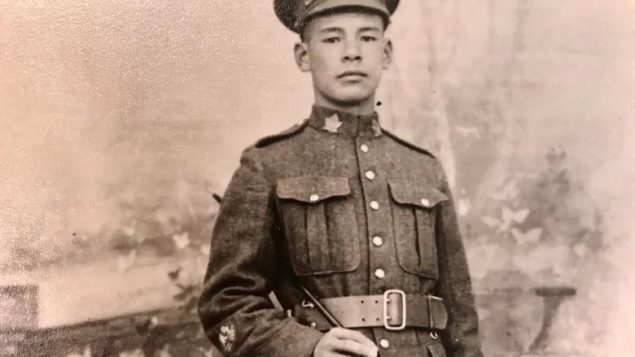
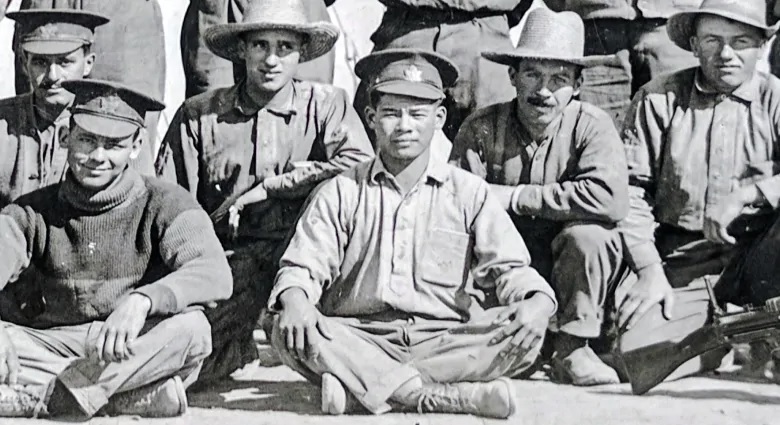
Private Frederick Lee
At the time of the First World War, anti-European immigrant discrimination was common. Immigrants from China, Japan, and other non-European countries were discriminated against, and seen as other and less Canadian than those from Europe.
Frederick Lee came from a large and successful farming family that had settled in Kamloops. When his father died, it became hard for his mother to maintain the family farm, and she moved back to China, along with most of his siblings. Fred Lee choose to stay in the country he considered his home.
Because of he was of Chinese decent, Fred Lee was not granted some basic Canadian rights, such as the right to vote. Despite this discrimination, he chose to enlist with the Rocky Mountain Rangers to serve the Canadian military. He trained at the Vernon Military Camp and was assigned the role of machine-gunner, which indicated that he demonstrated a high level of skill to his superiors in training in order to achieve this designation.
The Rocky Mountain Rangers were eventually broken up and assigned to other formations. Private Lee was deployed overseas as a member of the Canadian Expeditionary Force (CEF). He fought and survived battles and victories in France and Belgium, including the Canadian victory at Hill 70, where unfortunately he did not survive. He was most likely killed by a German artillery shell in August 1917. He is one of almost 20,000 Canadians who have no known grave.
Frederick Lee is one of approximately 300 Chinese Canadians who fought for Canada in the First World War. One can only assume they hoped their sacrifice would lead to acceptance as full Canadian citizens, a process that would take several more decades.

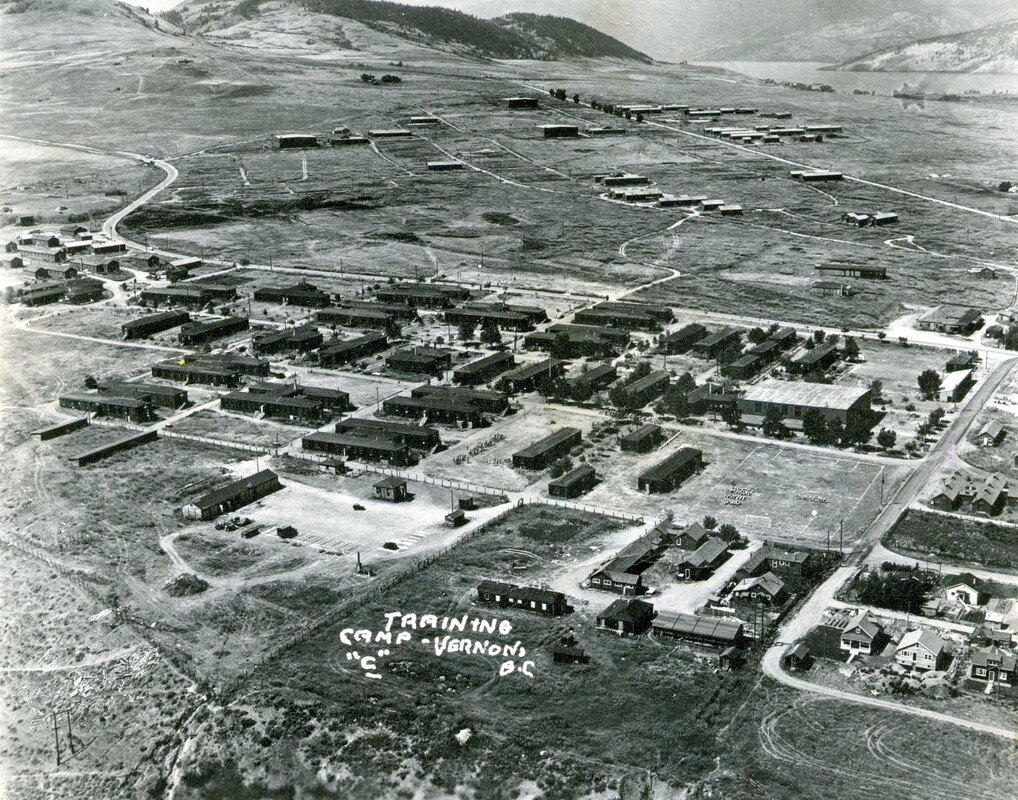
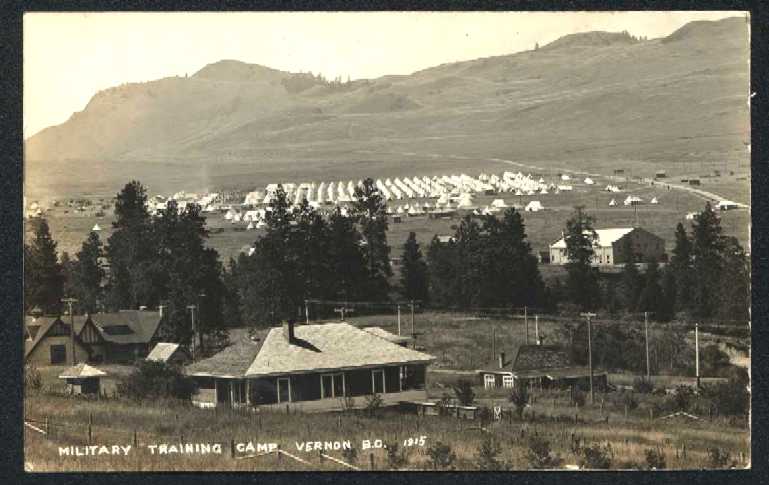
Vernon Military Camp
The military camp at Vernon was established in 1912, shortly after the formation of the 30th B.C. Horse regiment. Located on Mission Hill, it was used as an annual summer training camp for both cavalry and infantry militia.
The Okanagan’s local militia, the 30th BC Horse, was formed in 1908, with squadrons out of Vernon, Lumby, Coldstream, Armstrong, Enderby and Kelowna.
In 1911, the City of Vernon leased land to the Department of National Defense at no cost to set up the military camp, when it was deemed necessary to have a permanent summer training camp for cavalry and infantry militia units in the region.
In June 1913, the training camp attracted 800 soldiers from across British Columbia. Over 60 tonnes of equipment and supplies were shipped to the camp from Victoria. It was a huge economic and social boom for the City of Vernon; concerts were held by various regimental bands, ceremonial parades marched through the streets, and there were military sports days at the camp.
In 1914 World War I was declared and the Vernon Military Camp became a significant Canadian mobilization and training centre.
By 1915, there were 3500 men and by 1916 approximately 7000 men trained at Camp Vernon. Given Vernon’s population was only 3,000 at the time, the military presence in the town was significant.
Between the wars, the camp was home most summers to a concentration of BC militia regiments.
When WWII broke out, the Vernon Camp became a centre of military activity again. By August 30, 1940, there were over 400 men training at the camp. It became a WWII Canadian Army Basic Infantry Training Centre and support camp for the Coldstream Ranch Battle Drill School.
At the height of World War II training, there were more than 7,000 troops at the camp at any given time. This meant the constant sounds of bugle calls, the shouting of drill orders, rumble of trucks, and echo of exploding mortar shells and gunfire during practice sessions.
With the end of war in August 1945, the camp quickly demobilized and by the spring of 1946, only a minimum staff remained and many barracks on the upper camp were dismantled sold and rebuilt as housing for returning soldiers and their new families.
The Vernon Military Camp was closed from 1946 to the spring of 1949. When it reopened as an army cadet camp in July 1949. The Vernon Cadet Camp remains one of the main training camps for army cadets across Canada. Click here to learn more.
A glimpse at the Vernon Army Cadet Camp in 1976, one year after young women were first allowed to join the cadets in 1975.
This video, and others, is made available through the Cadet History YouTube channel.
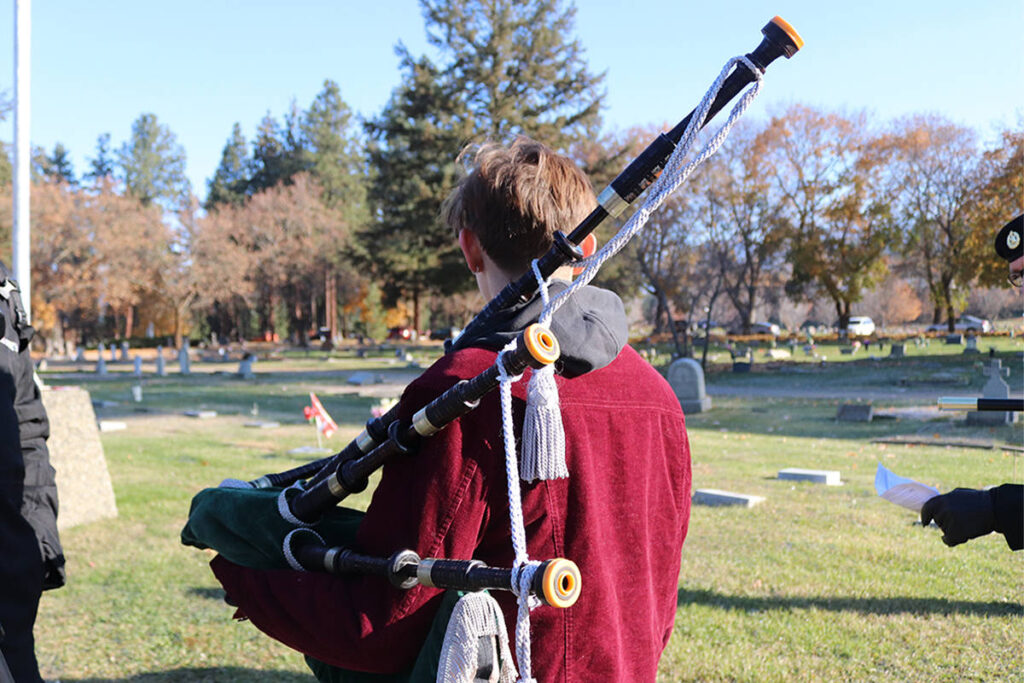
Vernon’s Own
The names of all of the men and women who have served Canada should each be remembered. Every year, local volunteers from the No Stone Left Alone Memorial Foundation provide ways for school children to learn about and remember our veterans, including placing a poppy on each veterans final marker at the Pleasant Valley Cemetery.
Below are some of “Vernon’s Own” who served our country. The names of prominent families may be familiar to us because they are now used to name roads, schools, community centres and other landmarks in our area. They are just some of the many local families whose children, parents, and siblings served Canada. May we remember them all.
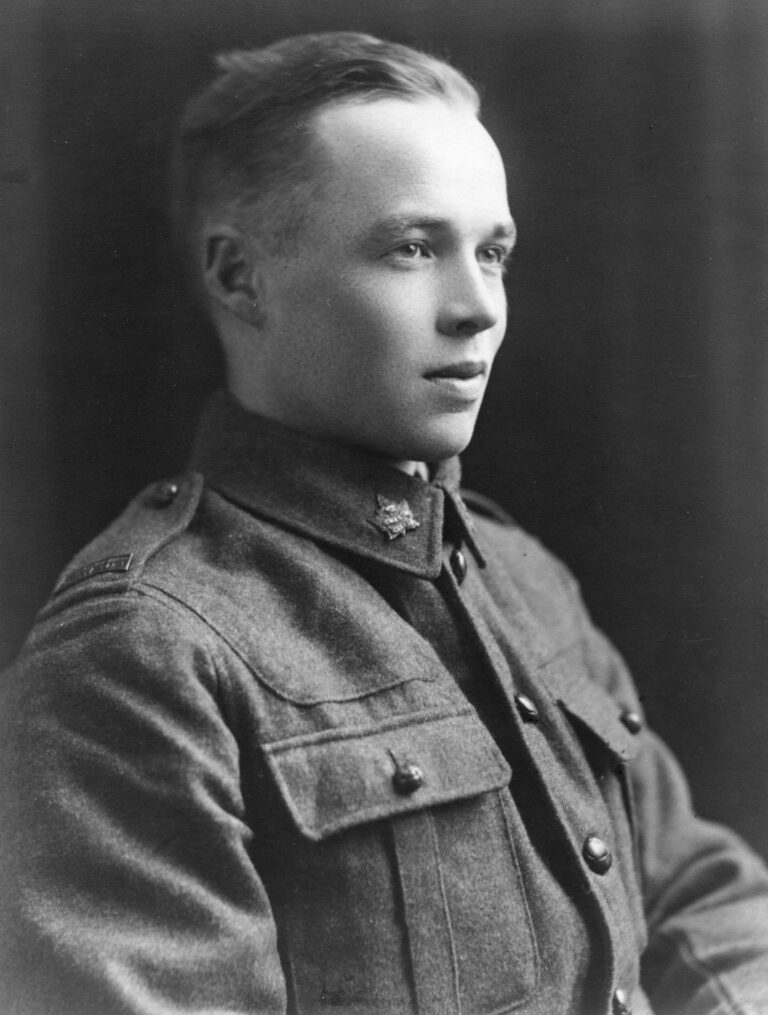
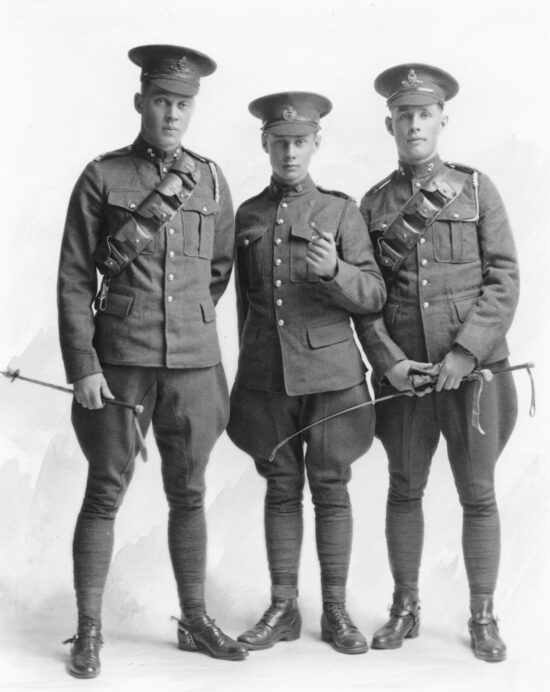
Ellison
Price and Sophie Ellison were a prominent ranching family in the North Okanagan. At one point, the place we now know as Vernon was called Forge Valley, named after Price Ellison’s blacksmith shop at the base of East Hill. This family later donated a large parcel of ranch land to become Ellison Provincial Park.
All four of their sons enlisted in World War I. The eldest, Price Ellison Jr., enlisted at the age of 19. He saw considerable action, and was wounded, in France, before being discharged in 1919.
Vernon Ellison enlisted when he turned 18. He participated in the Battle of Mons and, like his brothers, was discharged in 1919.
Herbert Ellison enlisted at age 16 and was assigned to the Canadian Army Service Corps reinforcement in British Columbia. But because he was underage, his mother pressed for his release, which was granted. Herbert rejoined on November 1, 1918, and was discharged in 1919. He never made it overseas.
His younger brother, Albert Ellison, enlisted into the 2nd Canadian Mounted Rifles, but was released from service after 8 months because he was only 17 years old. Once he was of age, he re-enlisted and served in France with the 1st Canadian Motor Machine Gun Brigade. He was discharged in 1919.

Middleton
William and Catherine Middleton immigrated to the Vernon area from Scotland in June of 1892 with Lord and Lady Aberdeen to their newly acquired Coldstream Ranch. In 1893 they purchased a large tract of land from the Aberdeens and established what was to become Midmar Ranch at the base of Middleton Mountain in the Coldstream.
In 1938, William Middleton was appointed Assistant Fruit Trade Commissioner for Canada in London England. The posting disappeared with the outbreak of World War 2 and the family returned to Vernon in March of 1940. The Middleton’s son, William Douglas, known as “Doug”, enlisted with the BC Dragoons – 9th Armoured Regiment and later in the Royal Canadian Airforce. After several successful missions, he safely returned in 1946. Middleton Mountain is named after his family.
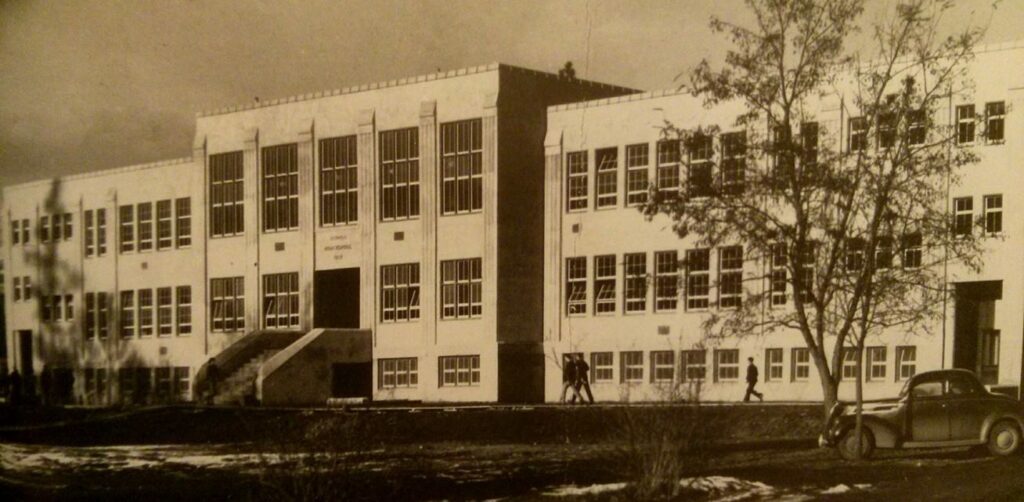
Fulton
Mary Sophia Fulton was born December 26, 1889, in Colchester, Nova Scotia. Her parents moved to Vernon in 1910, while Mary remained in Nova Scotia to train as a nurse. May 12th, 1915, at the age of 25, Fulton enlisted in the Canadian Army Medical Corps and was sent overseas to serve as a Nursing Sister in hospitals across England, France, and the Eastern Mediterranean.
On one occasion, a hospital ship on which she was working was boarded by German submarine officers. Fulton assured friends and family they were very courteous to the nurses while they searched the ship.
Fulton was discharged in 1919 and moved to Vernon in 1966 to live near other members of her family. Fulton Secondary School is named after her brother, Clarence Fulton.
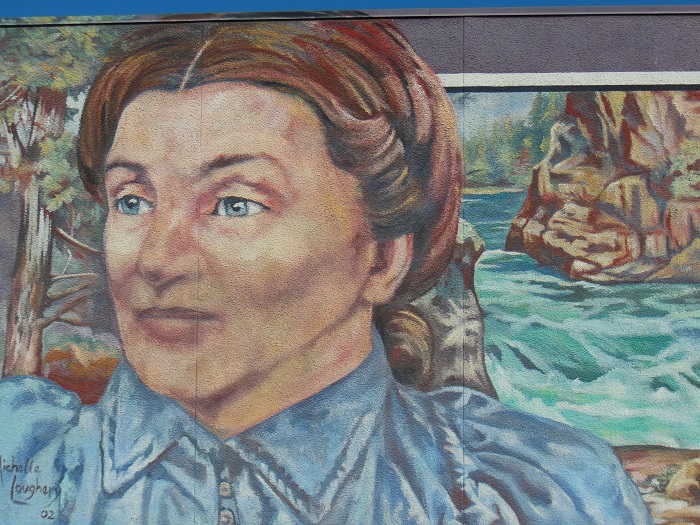
Schubert
Catherine and Augustus Schubert were European immigrants to Canada and pioneers who traveled from Fort Garry (Winnipeg) to BC over land on foot. Called the Overlanders, Catherine Schubert was the only woman, among 300 men, and the first European woman to travel by foot across Canada.
The day after they crossed the Rockies, Catherine gave birth to the first white child in BC’s interior, a daughter named Rose. The family settled in Armstrong, BC, and the Schubert Centre in downtown Vernon is named after Catherine Schubert.
In World War I, three of Catherine’s grandsons enlisted – Bertram, Dudley and James. All, fortunately, returned home, though James did so early. He was sent home because he lied about his age, saying he was 18 when he was just 16 and too young to enlist.
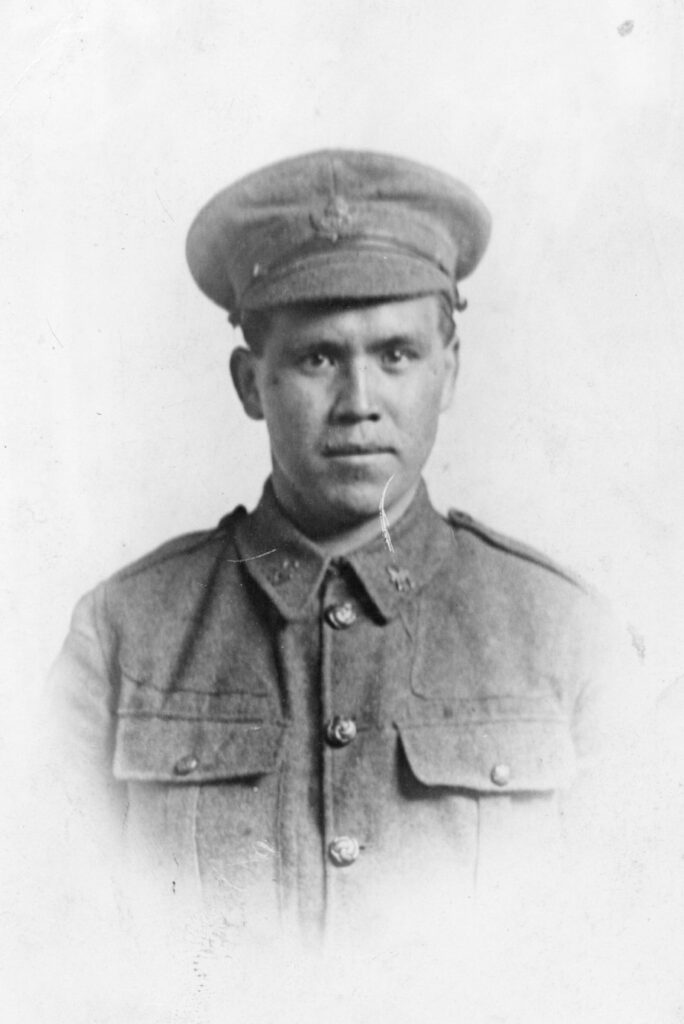
Tronson
Harry Tronson was the son of George Henry Tronson and Louisa Margaret. His maternal grandparents were Charles Forbes Vernon, after whom present day Vernon is named, and Catherine Kalamalka, a member of the Nk’maplqs (Head of the Lake) Band of the Okanagan Nation. His great-grandfather was Chief Kalamalka, a highly respected chief in Okanagan Nation, after whom Kalamalka Lake is named.
Harry Tronson worked as a farm labourer at the start of WW1. He enlisted on January 19th, 1917, at 19 years of age. He shipped to England, where he was taken on strength into the reserves. He then joined the 47th Battalion in France. Tronson caught bronchitis while on active duty and returned to England to recover. Once his health improved, he returned to the field. Tronson was discharged in 1919.
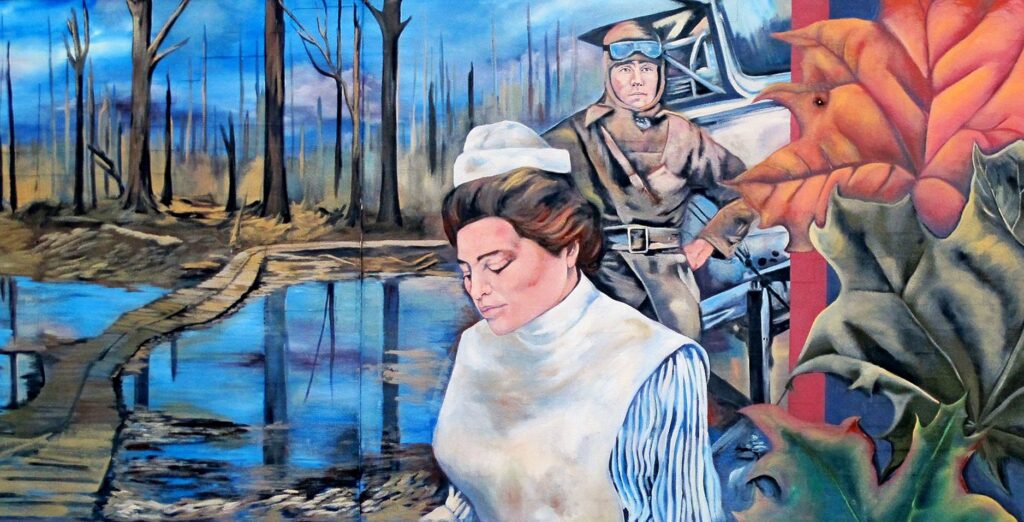
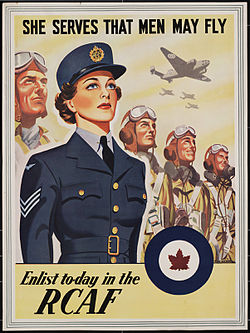
World War II
1 SEPTEMBER 1939 – 2 SEPTEMBER 1945
World War II (WWII or WW2), also known as the Second World War, lasted from 1939 to 1945. It involved the vast majority of the world’s countries, including all the most powerful nations, with 100 million personnel from more than 30 countries joining in the war effort.
World War II was the deadliest conflict in human history, resulting in 70 to 85 million fatalities, with more civilians than military personnel killed. For the first time, aircraft played a major role in the conflict, and major population centres were bombed.
Tens of millions of people died due to premeditated starvation, disease, massacres and genocides, of which the Holocaust alone killed more than 11,000 million Jewish civilians. With the bombing of Hiroshima and Nagasaki, WWII was also the only use of nuclear weapons in war to date.
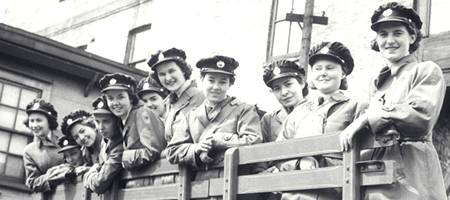
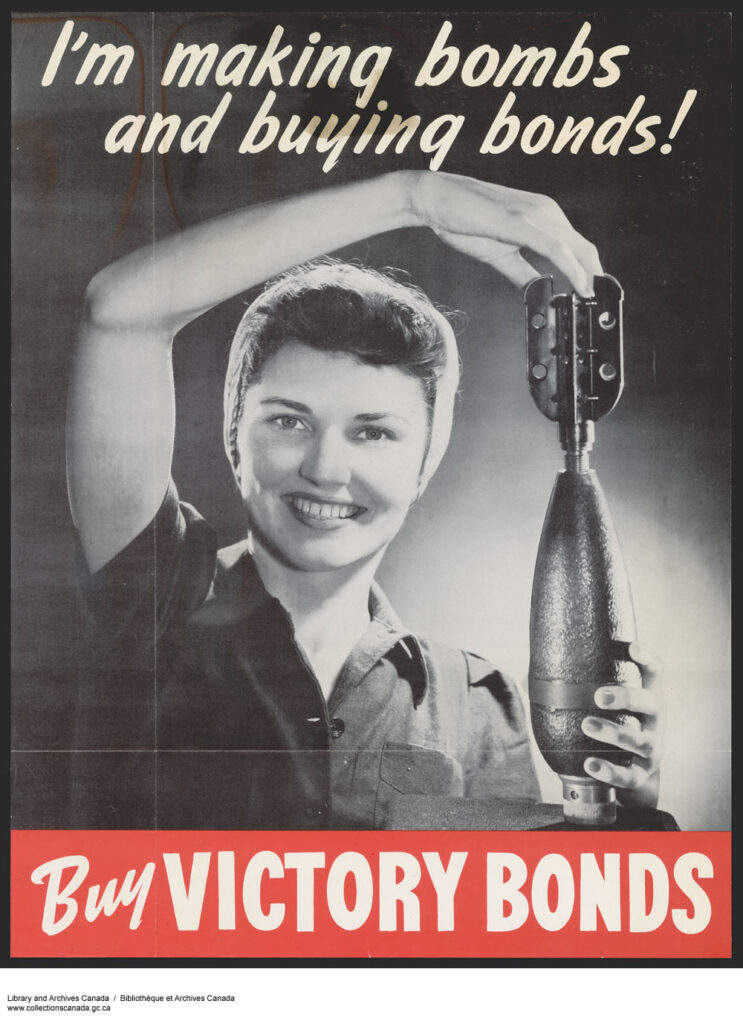
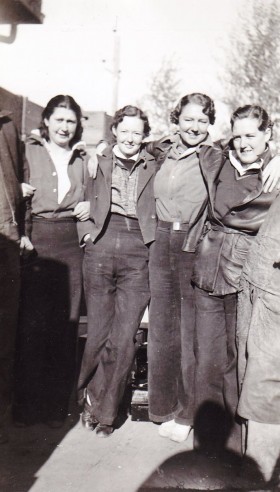
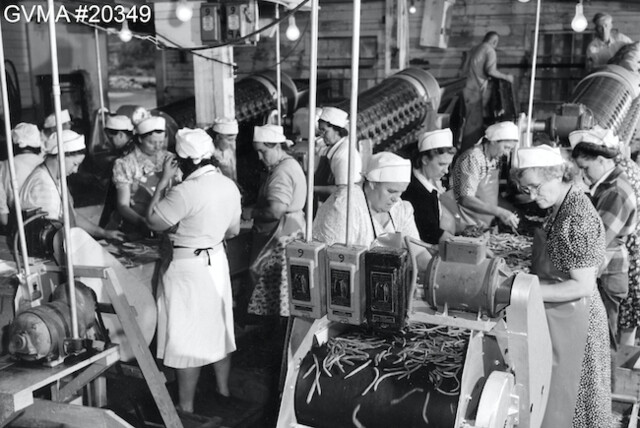
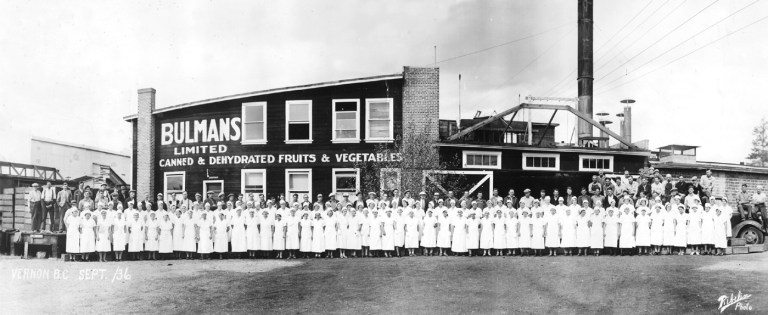
Women’s roles in the war
During the Second World War, the role of women in Canadian society changed dramatically. Women supported the war effort not only by volunteering for service overseas, but by working at jobs that had once been done primarily by men.
Beginning in 1945, women took on a wide variety of civilian jobs. They were employed in factories, on airfields, and on farms; built parts for ships and aircraft and manufactured ammunition; drove buses, taxis, and streetcars. The level of women’s participation in the workplace was a first for Canada. Before the war, approximately 600,000 Canadian women held permanent jobs. During the war, their numbers doubled to 1,200,000.
Women worked in every sector of the economy, including jobs traditionally held by men in manufacturing, construction, farming, fishing, and logging. Women gained a great reputation for fine precision work in electronics, optics, and instrument assembly. Elsie Gregory MacGill, who was born and raised in Vancouver, BC, was the first woman in the world to graduate as an aeronautical engineer. She worked for the Canadian Fairchild Aircraft Limited during the war and her team’s design and production methods turned out more than 100 Hurricane combat aircraft per month.
As well as joining the work force, women extended charitable work to the war effort. They knit socks, scarves, and mitts and prepared care packages for those serving overseas. They helped people displaced by the war by providing clothes and setting up refugee centres. To deal with wartime shortages, women became experts at doing more with less. They made their family’s clothing and planted Victory Gardens to supply fruits and vegetables to feed their families and communities.
Women also lobbied the Canadian government to form military organizations for women and in 1941/42 women became able, for the first time, to serve Canada in uniform. More than 50,000 women served in the armed forces during the Second World War.
With notes from Veterans Affairs Canada
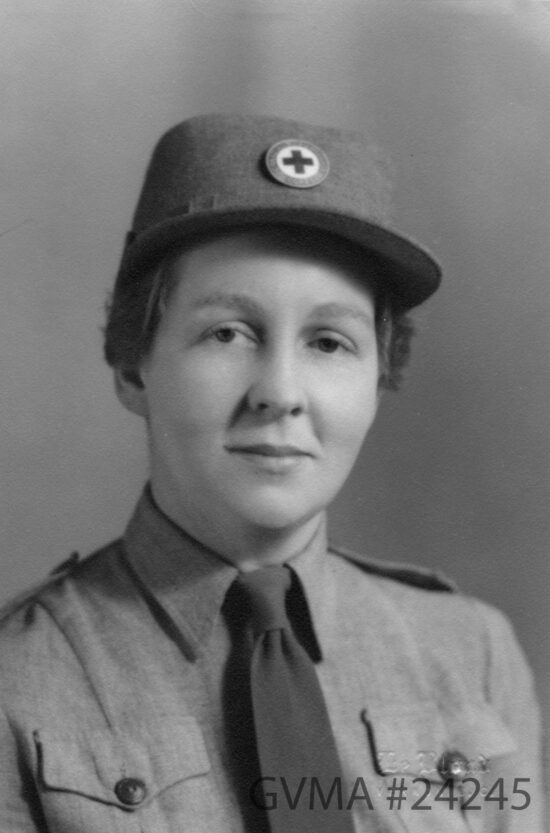
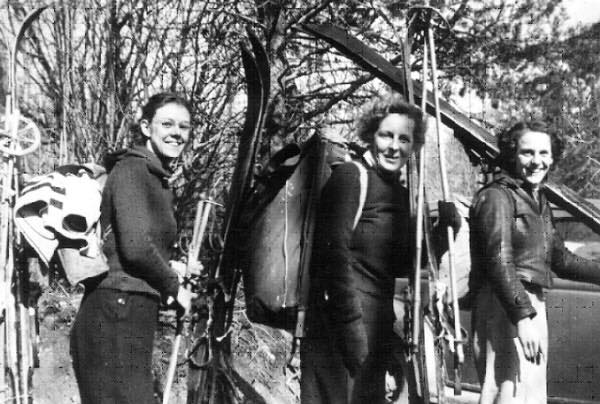
Anna Cail
Anna (Fulton) Cail was born in Vernon on April 17th, 1911 to Clarence Fulton and Thekla Reinhard. She grew up on her parent’s 20-acre farm located on Vernon’s East Hill and attended elementary school at the newly constructed Central (Beairsto) School where her father was both teacher and principal. Following in her father’s career choice, Anna graduated from UBC in 1934 and returned to the Okanagan to teach both English and physical education.
During and after World War II, 15,000 women from across Canada were recruited to form a volunteer service group known as The Canadian Red Cross Corps, serving in one of four sectors: transport, Nursing Auxiliary, Food Administration, or Office Administration.
Anna Cail was one of the brave women who enlisted with the Red Cross Corps (Voluntary Aid Detachment) in the Second World War. She was responsible for nursing and teaching wounded soldiers. Her time serving with the Red Cross left with her a lifelong commitment to promoting peace.
Anna Cail returned to Vernon and her teaching career, with a deep appreciation for hard work and dedication in every aspect of life, including achieving peace and stability, and instilled these values in the many students she taught.
Anna was among the pioneer skiers who organized the formation of the Silver Star Ski Club in 1938. These hardy souls would hike up the mountain to ski down on handmade skis. This kind of intrepidness and ingenuity must have served her well through the challenges and demands in a time of war.
Anna Cail passed away in 2009, leaving a legacy of dedication and involvement in education, athletics, politics, and the peace movement.
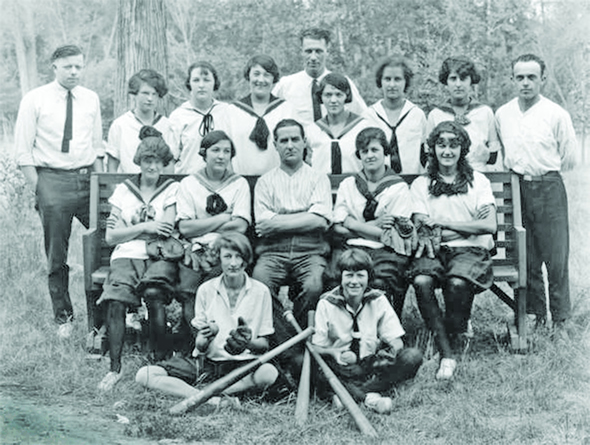
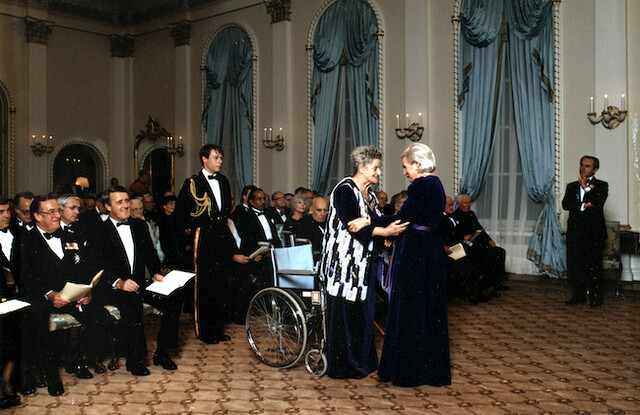
Hilda Cryderman
Hilda Cryderman was born in Vernon on May 10, 1904. As a young woman, she worked as a teacher, principal, and guidance counsellor. She was also a fantastic athlete, excelling in ice hockey, basketball, and baseball. Hilda referred to herself as “Vernon’s first tomboy”.
During the Second World War, Cryderman served as an education counsellor to the Women’s Forces in the Pacific Command. She was stationed in Vancouver, and her responsibility was to aid servicewomen who wanted to further their education or training in preparation for the return to civilian life.
This was an important role, since, in Cryderman’s own words, this was “the first step toward post-war rehabilitation.” This role may have also lead to the equal pay for equal work in BC, a charge led by Cryderman.
Before returning to her job as guidance counselor at Vernon High School, Hilda Cryderman stipulated she would not resume her role unless she was paid the same as the men doing the same job.
As chairman of the Okanagan Valley Teachers’ Association Salary Committee, Hilda obtained equal pay for rural and urban teachers, and male and female teachers, a first in Canada. In 1953, while chairman of a special committee of the Business and Professional Women’s Club, Hilda succeeded in persuading Premier W.A.C. Bennett to introduce the Equal Pay Act.
In 1954, she was named the first female president of the B.C. Teachers Federation. In 1972, she was made an honorary member of the Native Women’s Association of Canada for her assistance in their fight for equality, and wore the beaded medallion she received with the greatest honour.
Cryderman was recognized for her many achievements in October 1985, when she received the Order of Canada from Governor General Jeanne Sauvé, awarded to those “with the highest degree of merit, and an outstanding level of talent and service, and an exceptional contribution to Canada and humanity.”
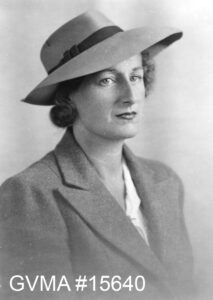
Rosalind Hodgson
Although she was often styled E.L. Hodgson, after her husband Major Eldred Hodgson, a celebrated captain who served in both World Wars and as a fruit inspector in the Okanagan, Rosalind Hodgson’s name should be known for her own remarkable achievements.
During World War 2, Rosalind, an English immigrant living in Vernon, enlisted with the Mechanical Transport Corps, and was immediately accepted after excelling in anti-gas, map reading, commissariat, first aid, driving, and mechanical repair training.
She was accepted to a job as a vehicle driver, one that meant hard work, long hours, and no pay. Indeed, unless they were driving transport lorries or ambulances, female drivers were required to be self-sufficient. They were expected to operate vehicles in England or any other part of the Empire in need, including on active fronts. But this did not dissuade Rosalind; she paid her own way overseas, saying that she wouldn’t even mind being sent to Kenya or the Far East.
Rosalind drove army vehicles all over the United Kingdom, and was attached to the Air Ministry in this capacity for some time. Her husband Eldred, meanwhile, was stationed in Manitoba as Adjutant of the Artillery Training Camp at Shilo. In 1943, the couple were granted leave together, and spent it pheasant shooting in the Okanagan—or, Eldred did; Rosalind, on the other hand, said that she didn’t much care for shooting and killing things “on this side of the Atlantic.”
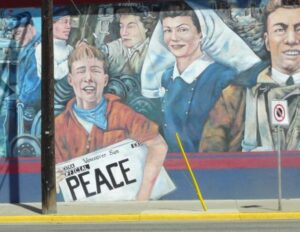
Canadian Peacekeeping
The mission of Canadian Armed Forces members is to defend our country, its interests and its values, while contributing to international peace and security. They serve in many capacities at home and throughout the world carrying on Canada’s proud military tradition. Over the years, many Canadian Armed Forces Veterans have served overseas in a variety of United Nations (UN), North Atlantic Treaty Organization (NATO), and other multinational task forces.
International peace missions often have positive effects but the strife, conflict and death that can surround these efforts is not always easy to handle. Being separated from friends and family for months at a time, the possibility of witnessing extreme violence and cruelty, of having to use force or have force used against you, and the realization that you could be killed or wounded while carrying out your duties are some of the experiences that many Canadian Armed Forces Veterans know well.
From Veterans Affairs Canada
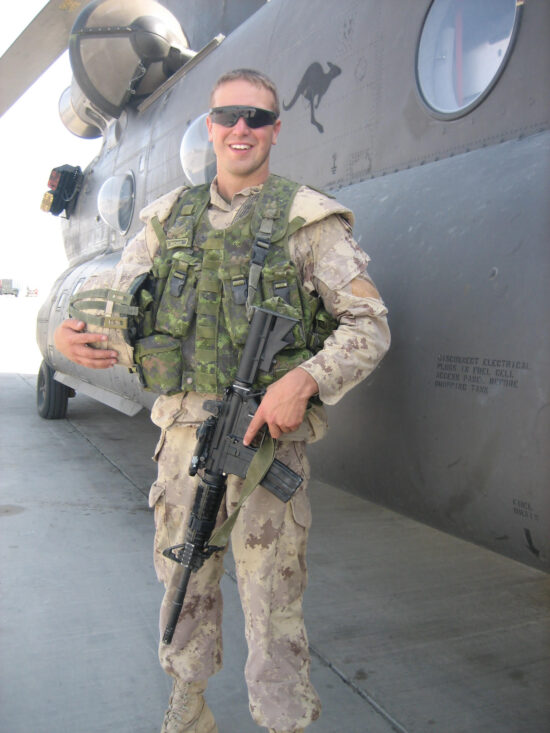
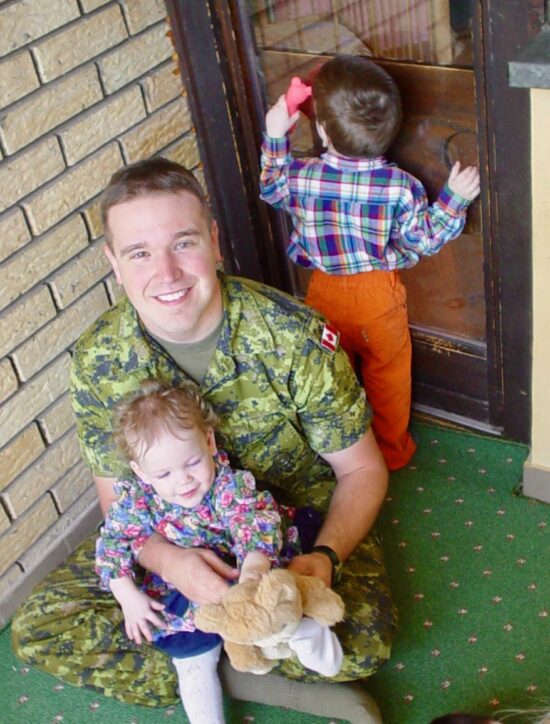
Chris Terleski
Christopher Terleski joined the Canadian Forces in May, 2000, as a reservist with the 64th Field Battery Royal Canadian Artillery in Yorkton, Saskatchewan. He spent time with other reserve artillery units in Regina and Brandon, and at the Western Area Training Centre in Shilo, Manitoba, as an instructor.
Terleski served on two Canadian missions overseas. The first was a peacekeeping mission Bosnia in 2003 where he was employed in the operations branch of the NATO stabilization force headquarters in Sarajevo. In 2006, Terleski was deployed to Afghanistan as a member of an Artillery gun troop, part of the PPCLI (Princess Patricia’s Canadian Light Infantry battlegroup).
Terleski explains, “Our role was to provide an umbrella of security and to assist the country with establishing their own military and police forces. Our presence allowed civilian international organizations to work inside the country in a stable, secure environment.”
Terleski is now a constable with the RCMP, the Media Relations Officer of the Vernon Detachment, and a married father. Though he served overseas before having a family, “Looking back on it now, I can see what an immense sacrifice it was for all those around me who did have to leave spouses and children at home.”
Terleski’s experience serving Canada abroad has given him perspective on serving those at home. “Where we can, we need to help others, whether it’s in our homes, our communities or in the world.”
Something he learned when serving in the Canadian forces and as an RCMP, he shares when speaking to students or coaching: “Let the mantra ‘Be a good human’ guide your actions and your decisions.”
“As Canadians, we are so incredibly fortunate for what we have. Our peace, freedom, and security is so precious and cannot be taken for granted.”
“I was incredibly proud to be a peacekeeper representing Canada. I still am proud of that to this day.”
– Chris Terleski
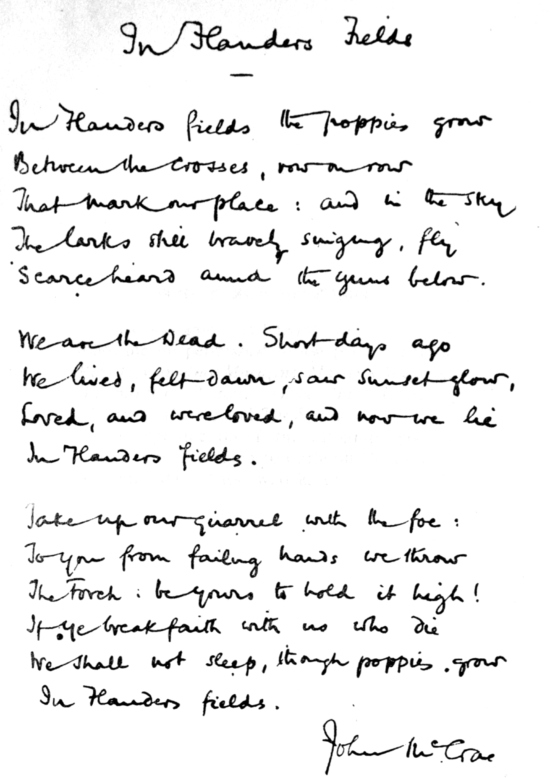
In Flanders Fields
BY JOHN MCCRAE
In Flanders fields the poppies blow
Between the crosses, row on row,
That mark our place; and in the sky
The larks, still bravely singing, fly
Scarce heard amid the guns below.
We are the Dead. Short days ago
We lived, felt dawn, saw sunset glow,
Loved and were loved, and now we lie
In Flanders fields.
Take up our quarrel with the foe:
To you from failing hands we throw
The torch; be yours to hold it high.
If ye break faith with us who die
We shall not sleep, though poppies grow
In Flanders fields.

